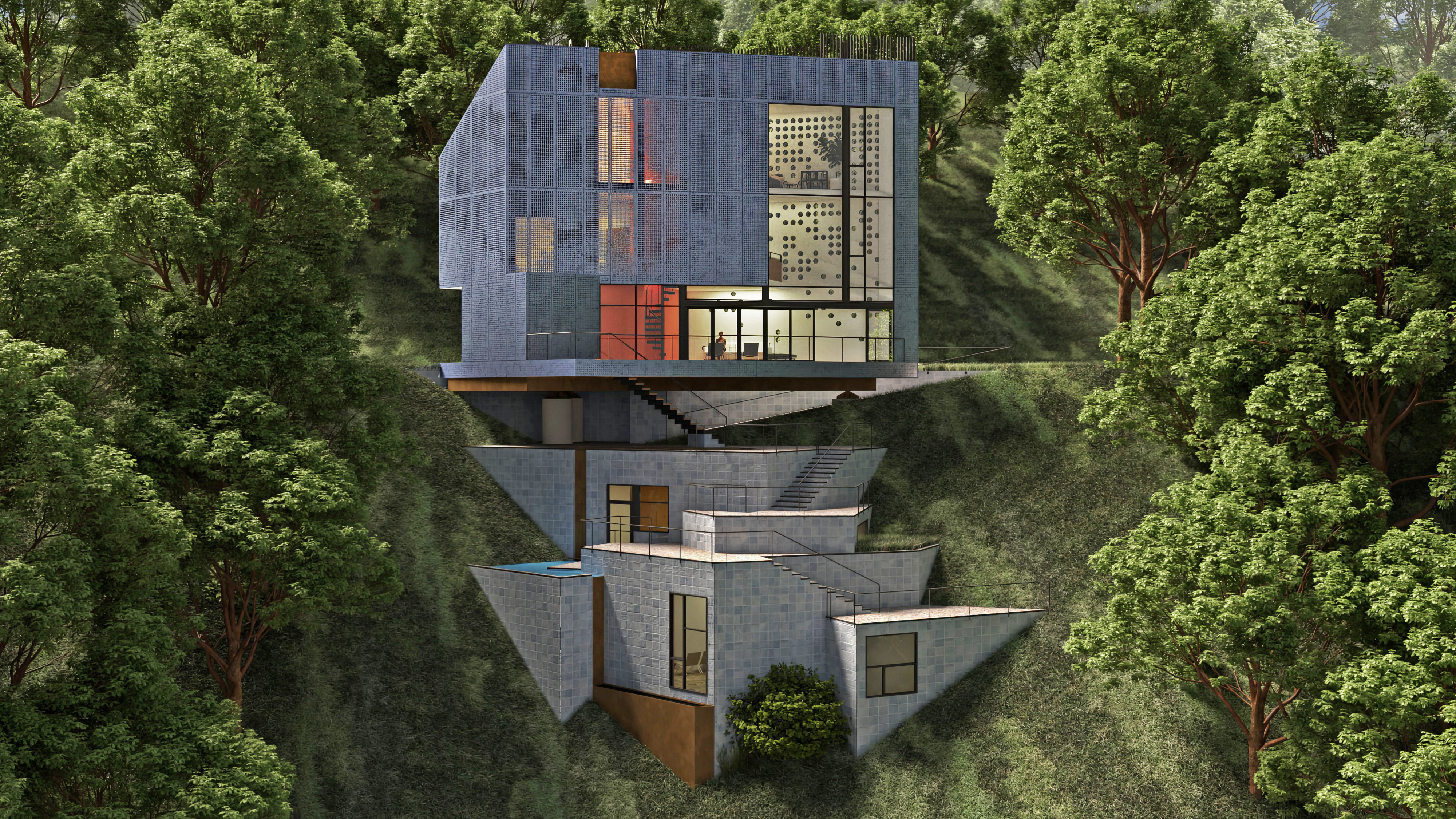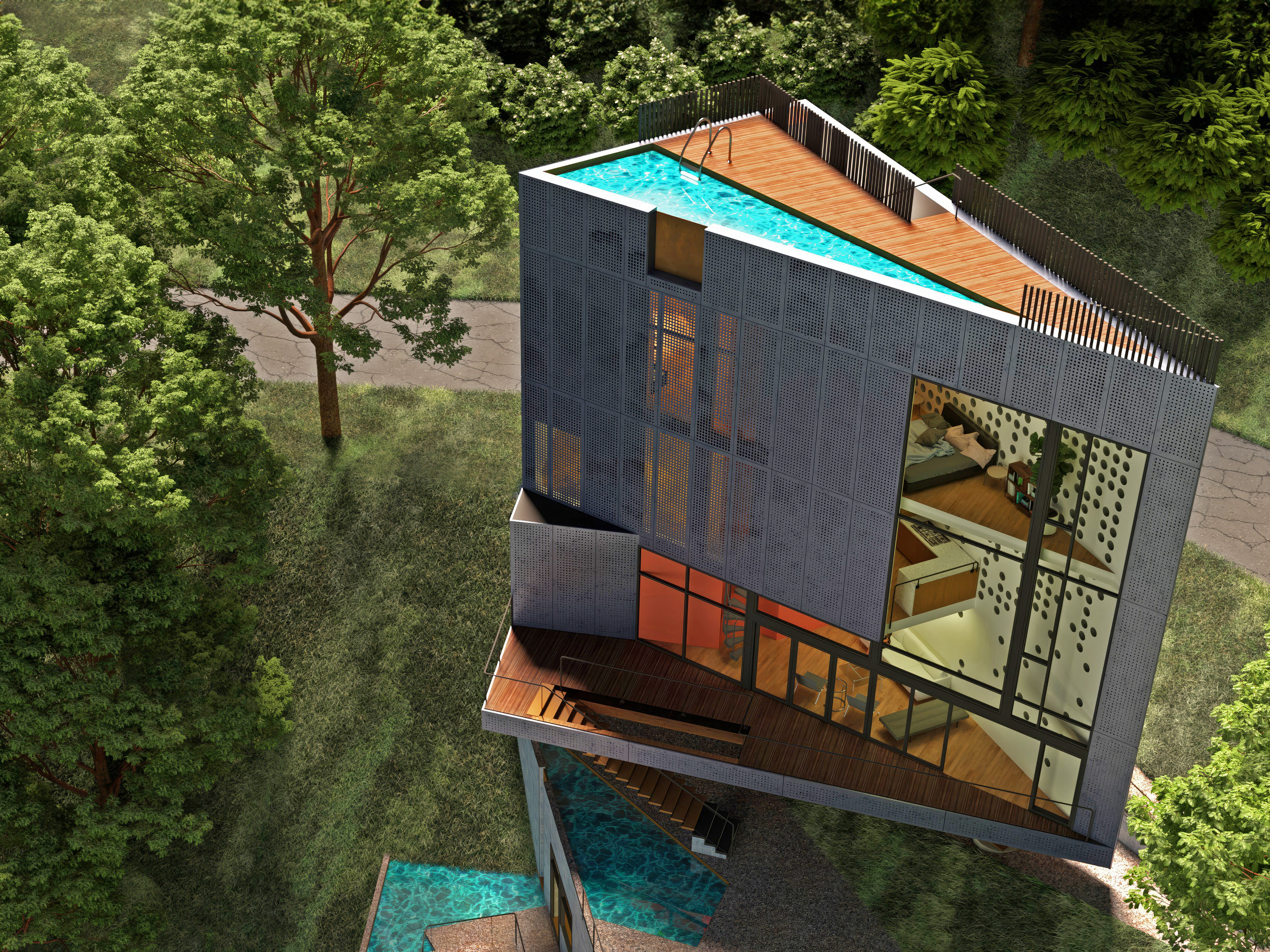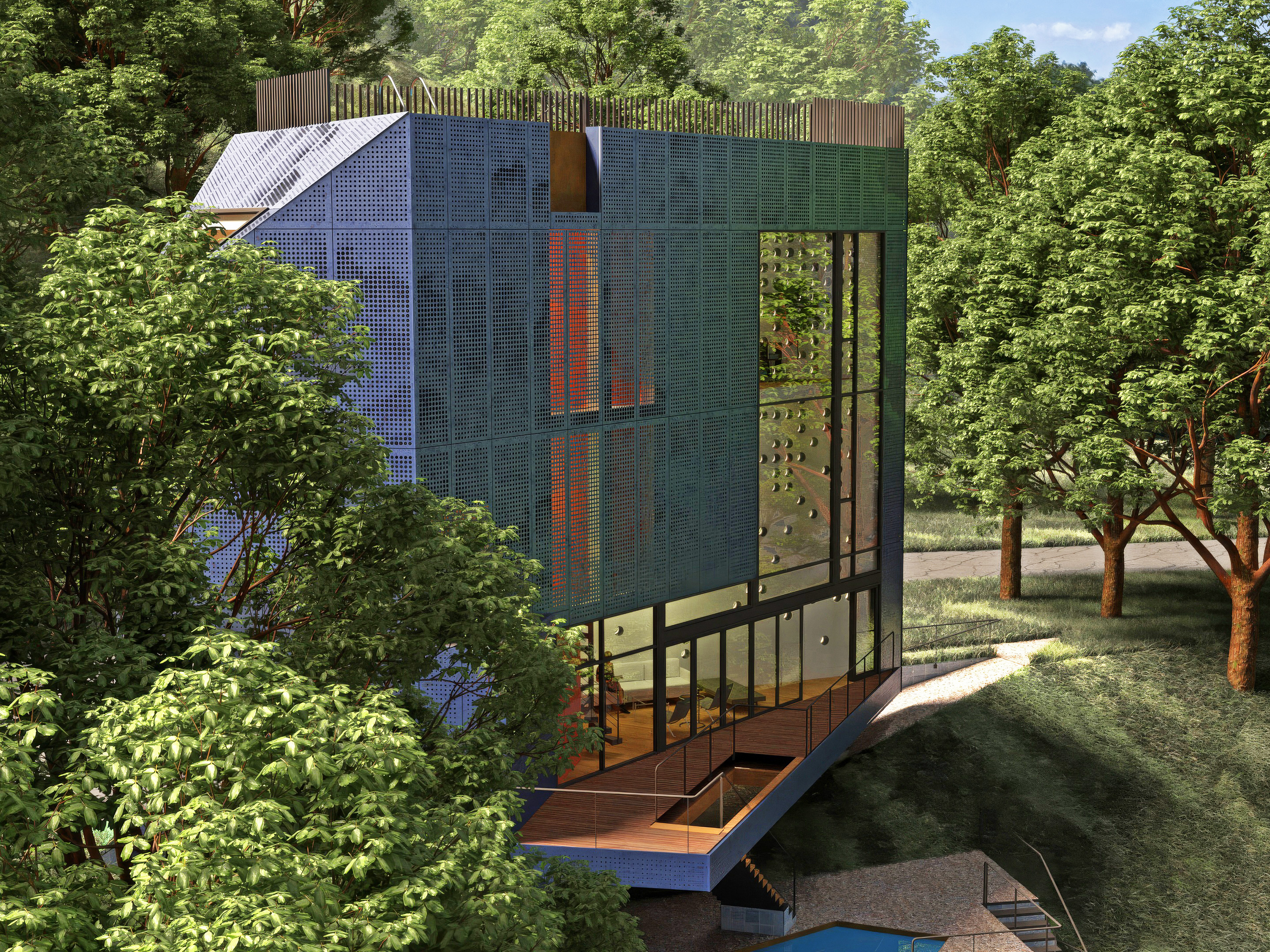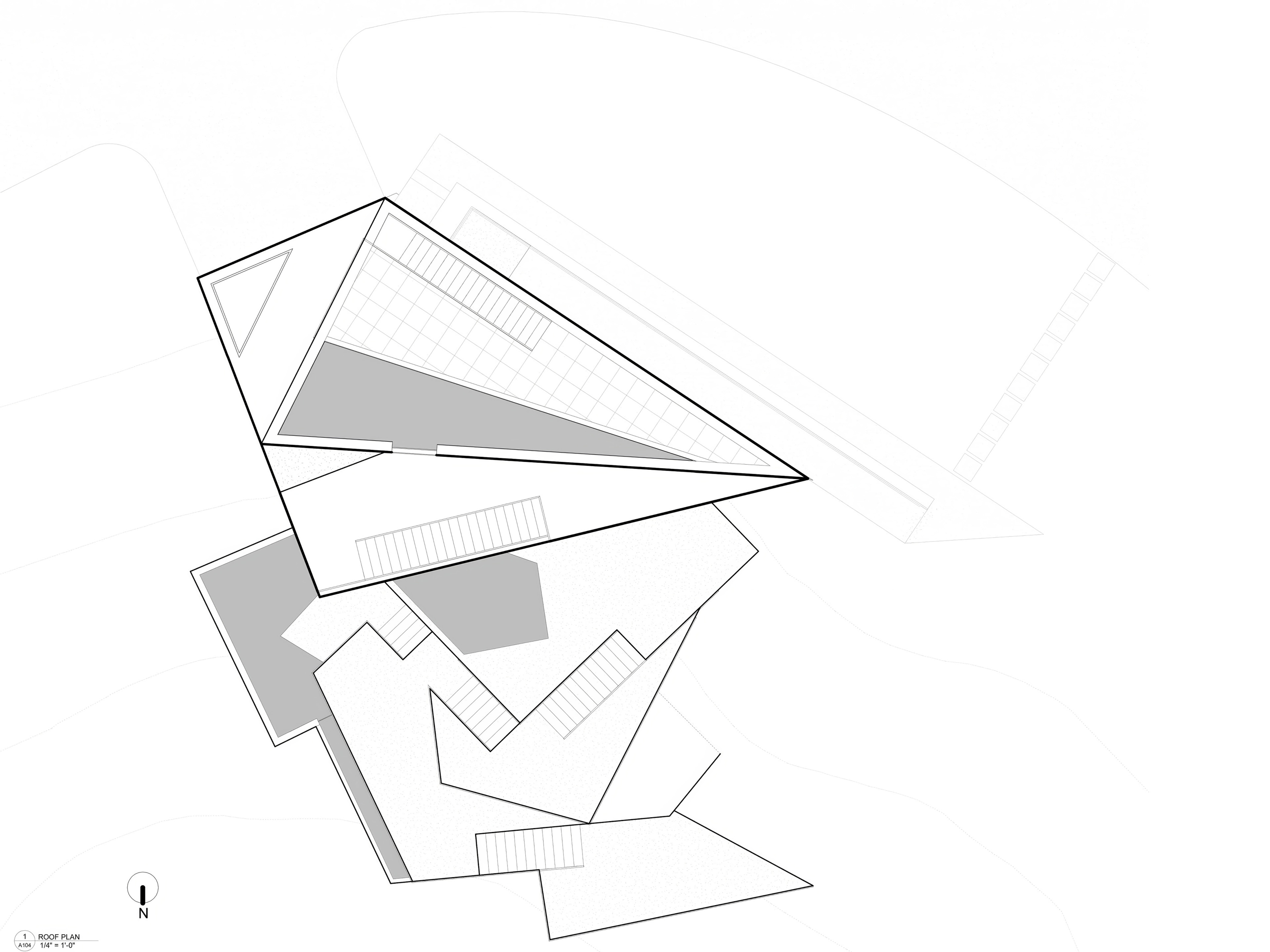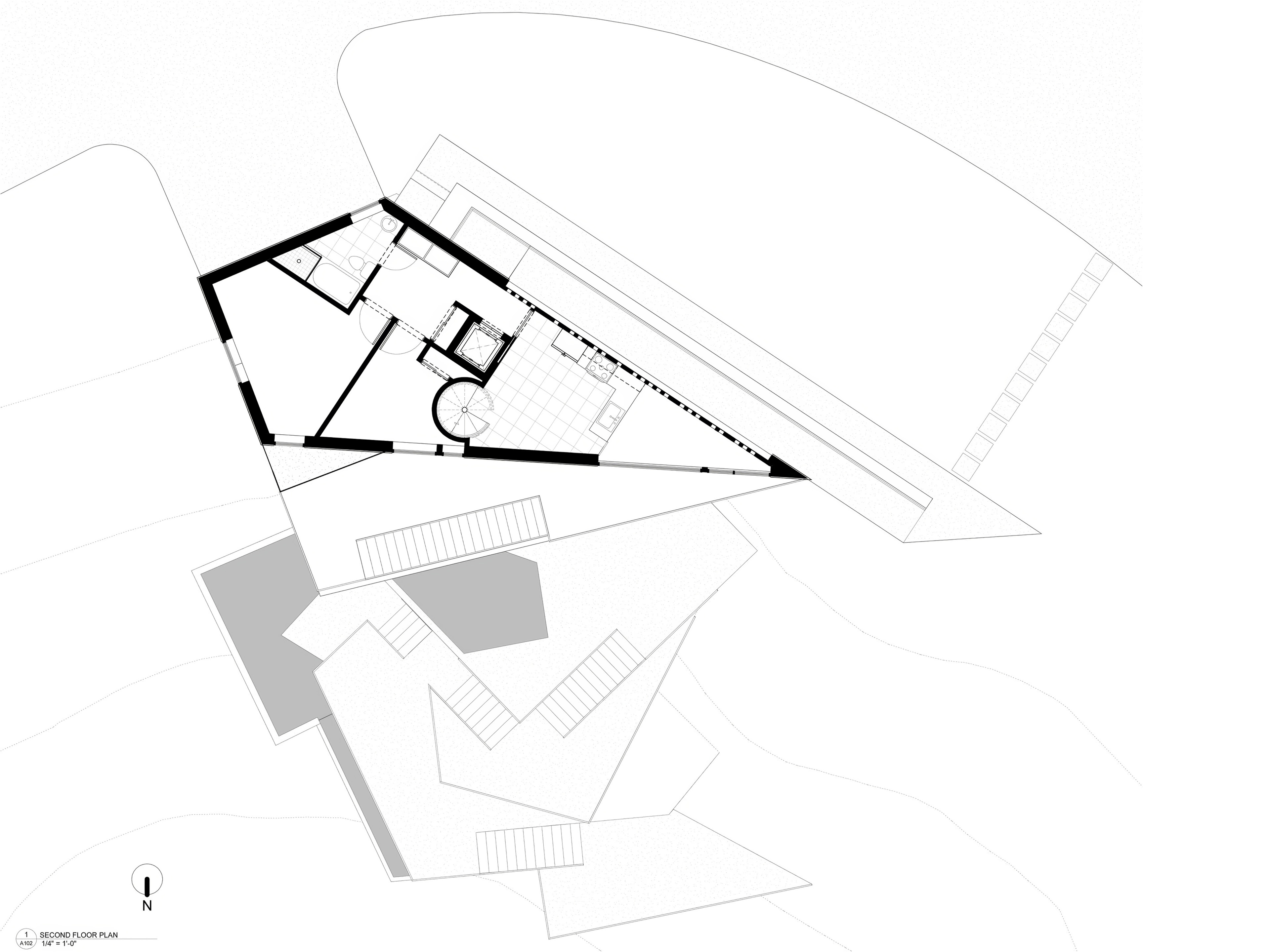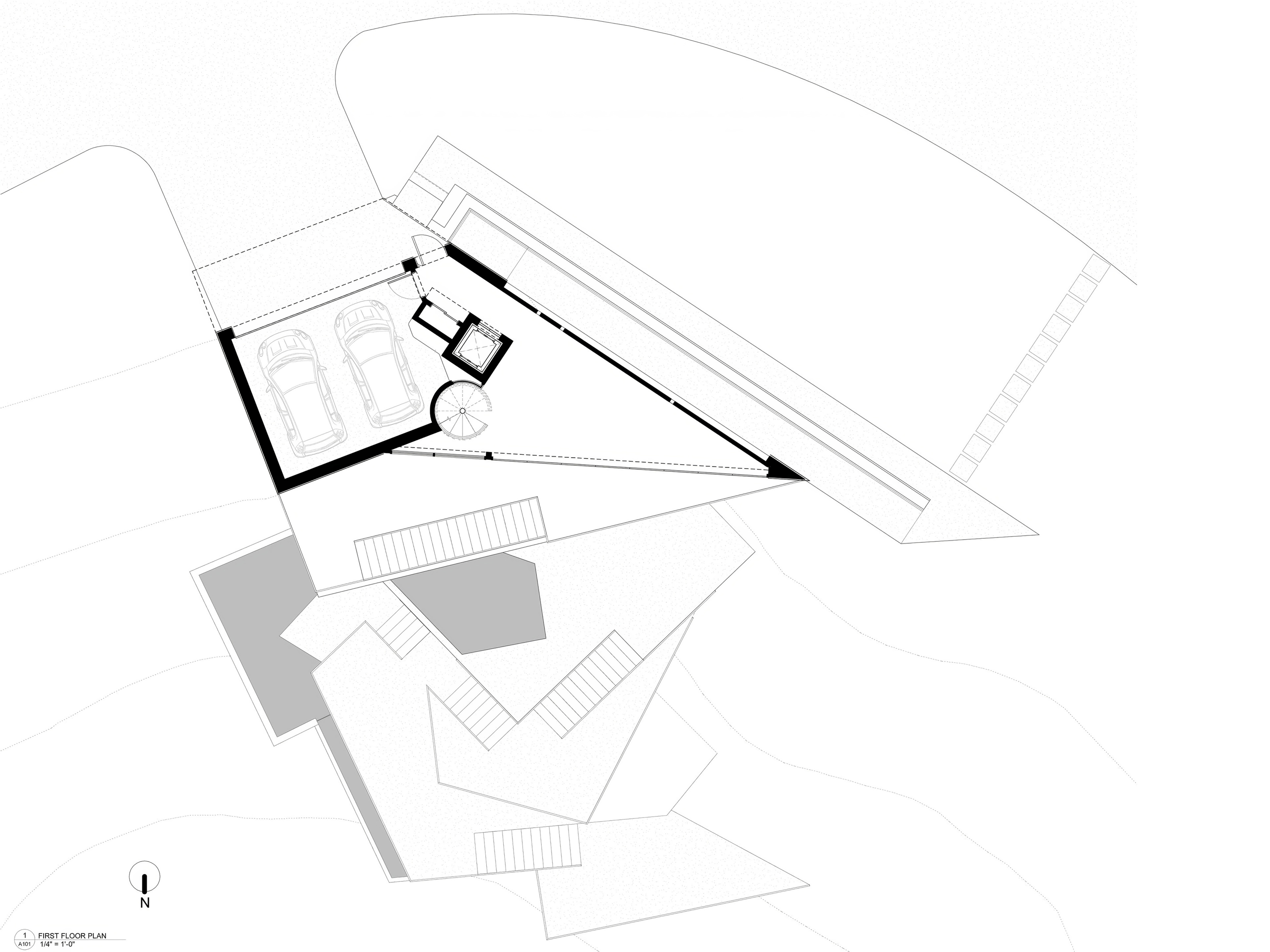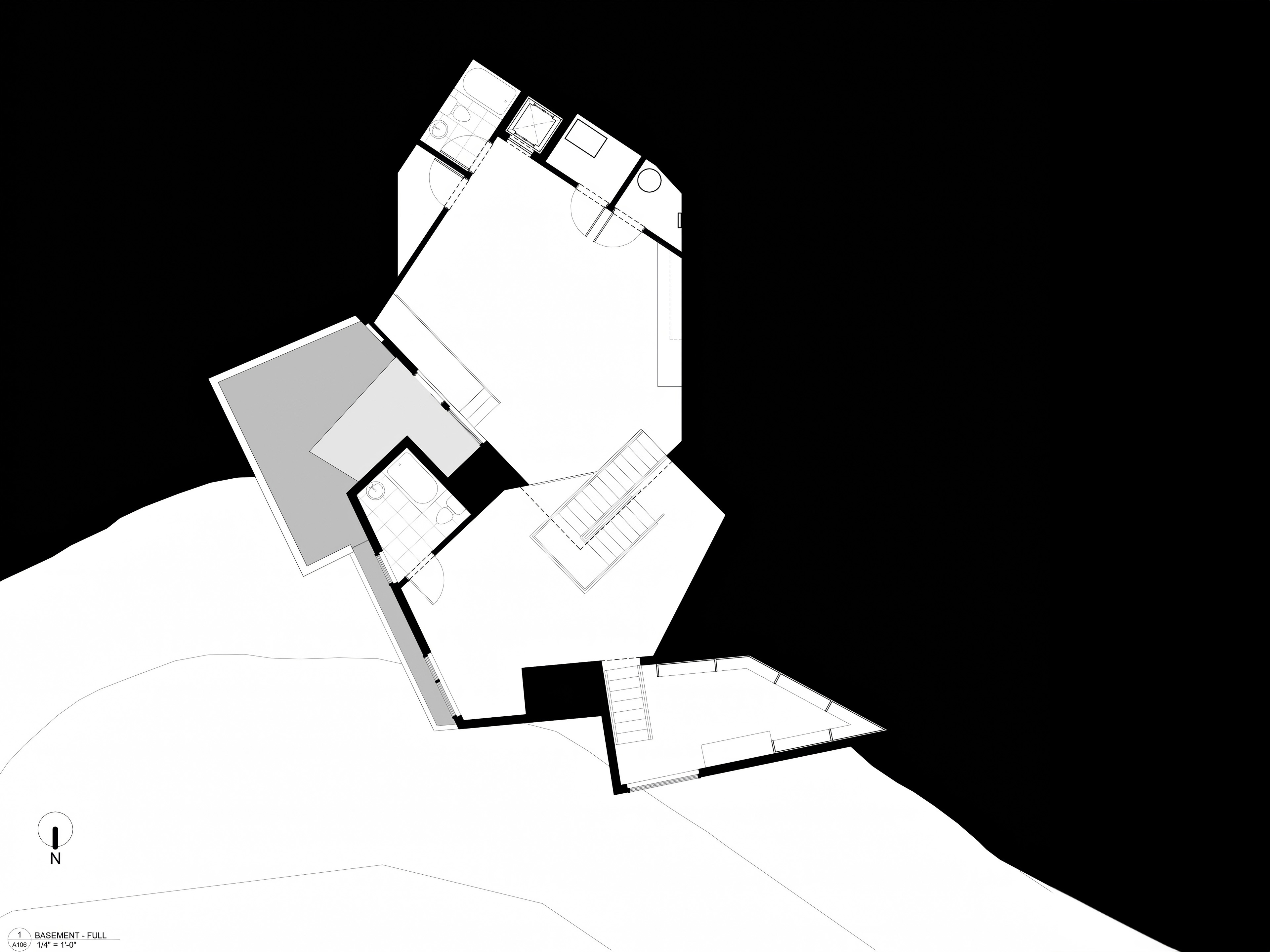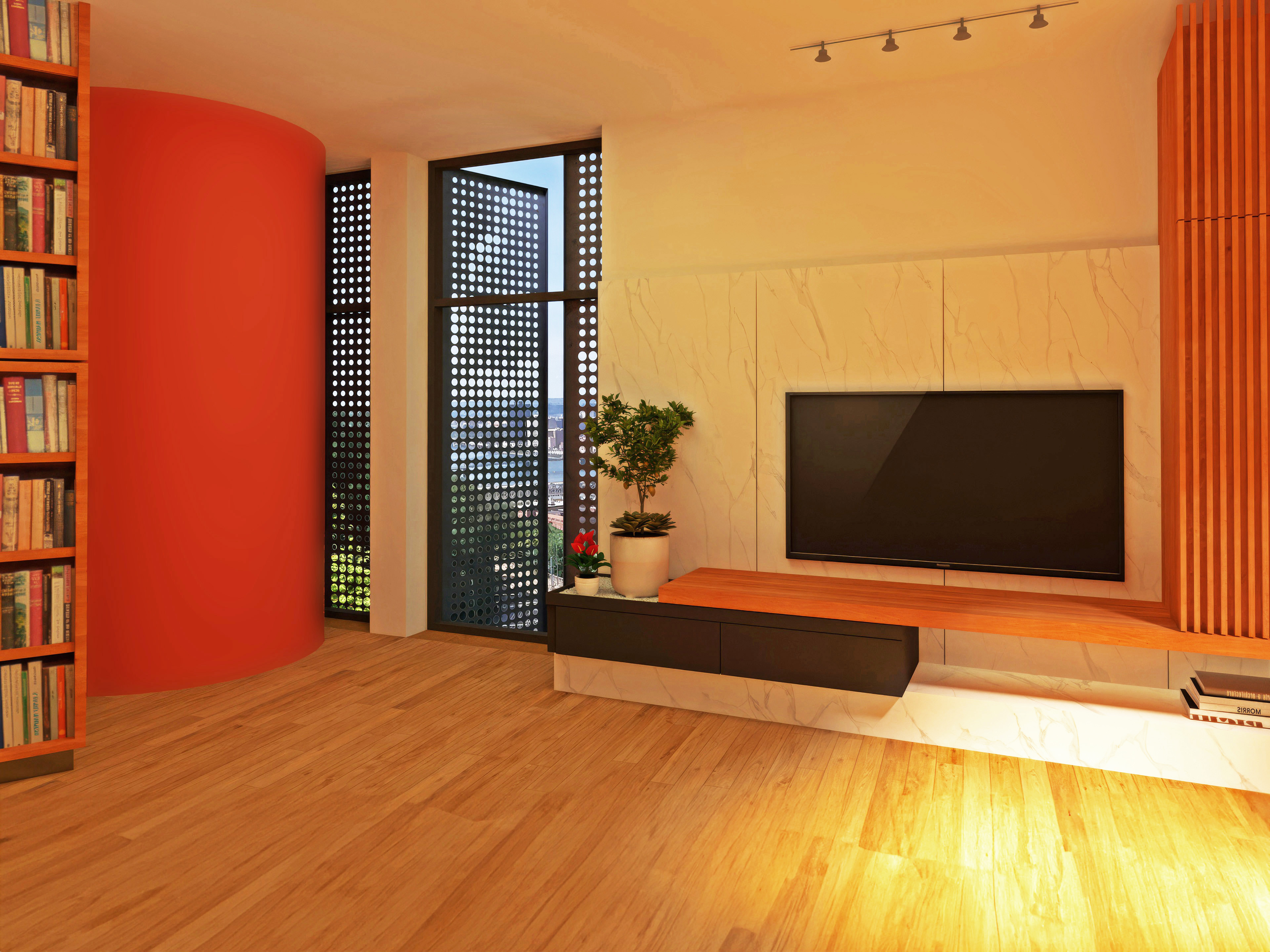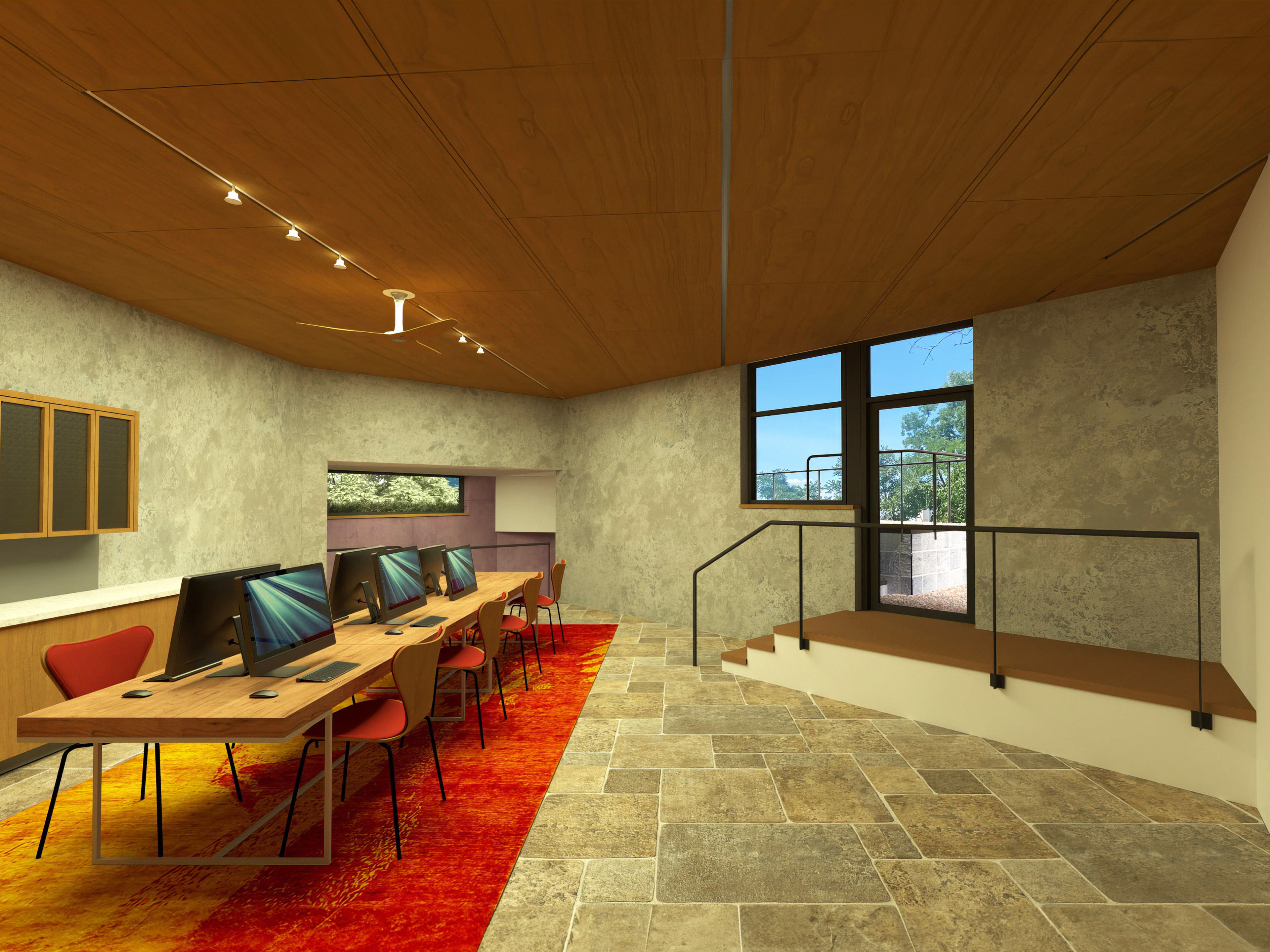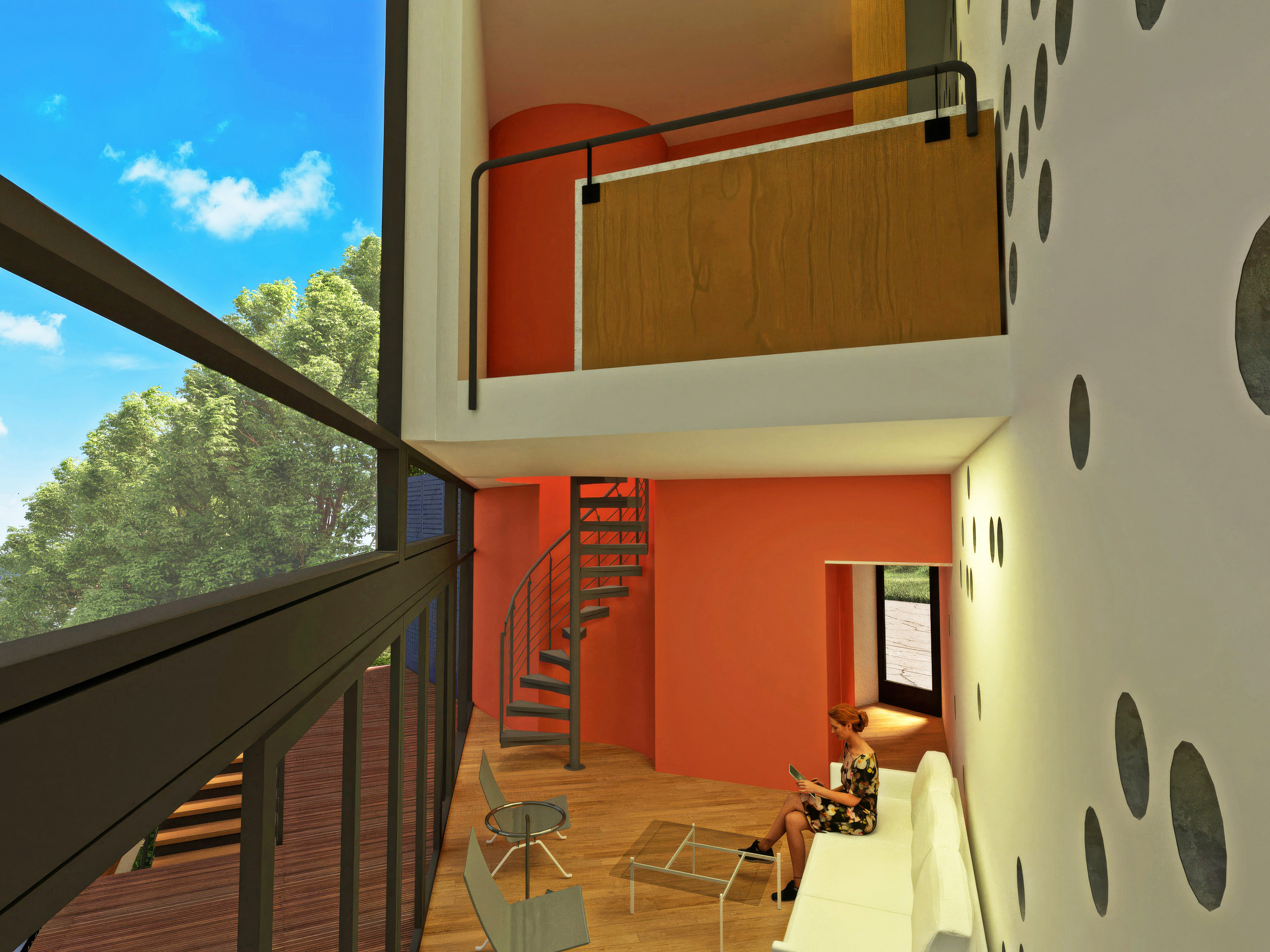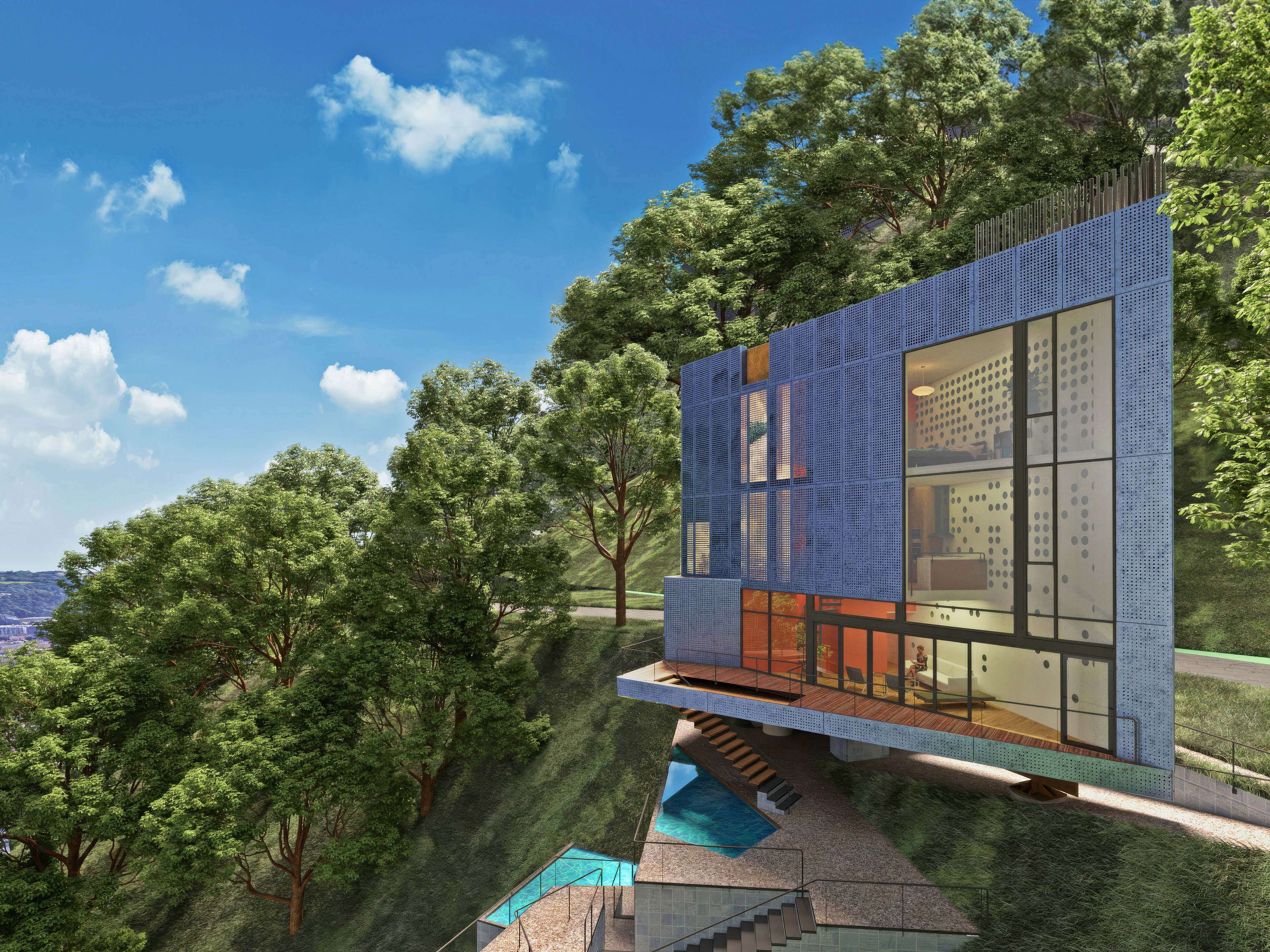Roanoke
Neuroarchitecture: Our future-thinking Clients, a couple who moved to Pittsburgh from Israel for work, fell in love with their new city. After living downtown for a couple years, they found this potential Southside Slopes site on Roanoke Street overlooking the city. Working with a Carnegie Mellon University neuroscientist, we employed neuroscience strategies both inside and out to fully engage the senses. This home, situated midway between earth, air, city, and forest, prioritizes exploration.
Read More >Phase 1: Program and Structure
Our Fisher ARCHitecture Roanoke design was live-work with the two portions of the project – a 1,600sf home above and an earthbound office below – connected via an elevator and an exterior ramp. Our goal was to integrate work and home yet clearly separate them into two types of space. Consequently, the partially buried offices would have provided a comfortable, private place to communicate and collaborate. Up above, the home would have taken advantage of the view while still maintaining a certain amount of privacy and peace behind the screened walls.
Certainly the poor soil conditions and formidable slope were a challenge. Although the City permitted us to build on the site, the site was so steep that drillers and geotechnical engineers were unable to access it. Our challenge was to drill and pour pier foundations for the home entirely with street-mounted equipment. Together with our engineering team, we devised the structural strategy that resulted in the triangular shape of the primary structure. Then we firmly tied the additional construction below to the primary piers with grade beams and mini-piles. Once the contractor poured the first floor slab, they could then use the it as a staging platform to work on the site below.
Phase 2: Neuroarchitecture
After the access road collapsed, the clients decided to abandon the project. Nevertheless, we continued forward with the project by partnering with a neuroscience graduate to explore the impact of architecture on the human brain. The brain seeks a balance between familiarity and novelty, between order and complexity. The completed design aims to create a dynamic, enriching experience by applying three interwoven neuroscientific principles: biophilia, or nature-informed design; sensory engagement; and cognitive stimulation.
For example, the project’s perforated aluminum panels duplicate the pattern of the trees that screened the site prior to construction. The additional volumes that cascade down from the house emerge from the hill at irregular angles and varying sizes, imitating rock formations.
Neuroarchitecture: Engaging the Senses
We’ve made a point to fully engage the senses: Roanoke, situated midway between earth, air, city, and forest, prioritizes exploration. With no visible windows from the street and no hint of the gardens below, its complexity is only hinted at as one approaches. An occupant can construct a conceptual map of the home only by entering and then experiencing each successive space in turn.
The wide variety of textures present in the materials used throughout the house enrich the visual experience, from the ceramic tile on the lower garden levels to the perforated facade fractals. Shadow and light play dynamically across the home interior as the sun moves across the sky. At night, lights illuminate the home interior and the negative space of the pattern appears. We’ve desisned many places where you can touch the metal screens. And the sound of gently running water from the pools follows the project circulation, guiding visitors through the project spaces.
If the home had been built, it would have become a Pittsburgh icon. This project connects people and places together through metal, hills, and water.
